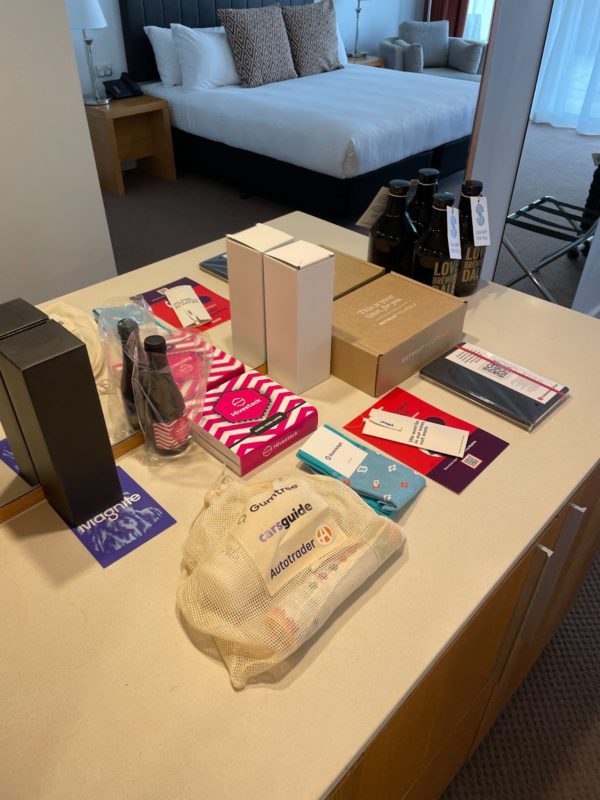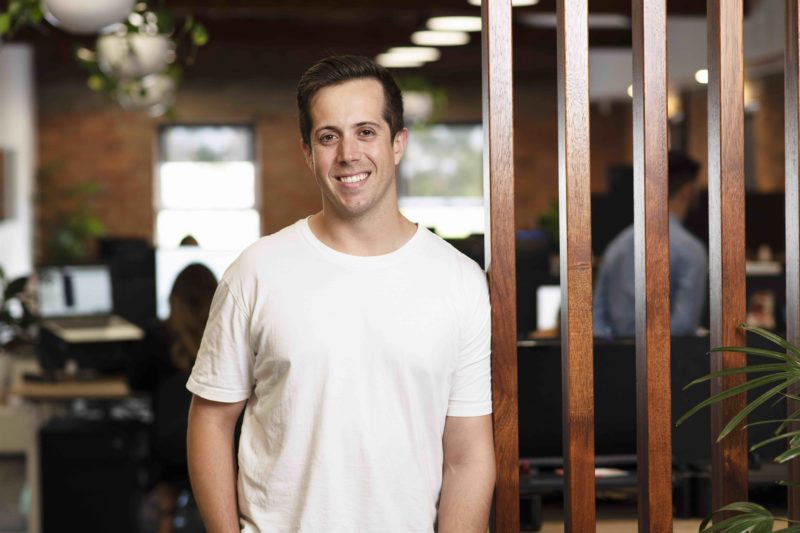It’s on us all to think smarter about business event swag
Sam Wood, CEO at Alpha Digital takes a look at the issue of sustainable SWAG practices at industry conferences.
For those of us fortunate enough to have called the marketing or advertising industries home, myself included, we’ve seen every promotional item you could imagine. I’m sure the pastime of the conference swag haul photo post-conference is one I’m not alone in. It does raise the question – isn’t there a better way to approach sponsorship and brand awareness in 2022?

I’ve been fortunate enough to attend conferences of varying sizes around the country over the past ten years at my company, and a consistent factor is an exceptional volume of flyers, USB sticks in every novelty shape, a vast array of phone attachments, beverage accessories and fidget toys. Limitless plastic, glass and bamboo shoved into a storeroom for a junior to maybe discover and enjoy. But more likely binned shortly after being received, with one Global Ad Impressions Study finding 21% of branded and promotional items are kept for any length of time, over half are given away, leaving 23% to end up in landfill.
Swag, or the ever-eloquent, “Stuff we all get”, shares its roots with marketing itself. In its 1800s origin, swag turned people into walking billboards for products and services. By the 80s, swag had evolved with the frenzy of marketing itself and emerged as an industry of its own. It sought to no longer just increase brand awareness but act as a gift of gratitude.
While corporate swag may have tapped into this expectation for reciprocity, as branded shot glasses or pens became the currency to exchange for attention, memorability and loyalty; by 2022, swag has definitely outgrown its novelty. As an industry we have hopefully become better educated on the state of our planet. It’s no longer an exclusive extra or a badge of honour. It now exists in abundance, continuing to be rolled out of habit rather than strategy.
Know more do better
The Pandemic has offered us an exciting crossroad as we begin to see the resurgence of in-person conferences. Our transition online saw a total pause in the handout of thoughtless, unintentional and bin-bound swag, coinciding with our culture growing more mindful all round. As we begin recalibrating to this post-pandemic industry landscape, there’s the opportunity to leave the branded conference stall tradition in the past, where it belongs.
If swag is a relationship building tool, surely there’s a more meaningful and connective tool than the thoughtless stock of a tote bag.
As an advocate for a more sustainable world and an eyes-open realist operating within the events space for many years, Lisa Renneisen, co-founder of Digital Innovation ecosystem Something Digital has been thinking about this ideal well pre-pandemic. “Cutting to zero-swag in the name of sustainability feels a bit sad because some people really do love it and many of our sponsors feel it is an important benefit. As we see it, phasing out cheap swag is a 2-3 year education process,” says Renneisen.
“The weight of the waste kills me, and it has for a long time. That is why for Something Digital 2022, we only produced 200 bags despite expecting 500+ attendees at the event. The opt-in nature will be communicated clearly to attendees so that they can make a conscious choice to take a bag or not.”
Something Digital also offered sponsors the chance to provide attendees with a soft asset which lives in a digital vault, an eBook or (previously weighty) brochure that would typically have been given away on stands. The conditioning we’ve had for using QR codes for Covid-19 check-ins has given the tech a new lease of life making a strong comeback for event exhibitors looking to level up their data capture efforts and provide marketing materials with a click of a button.
Change creatively
What can we do with this information, knowing that change will take time? If the most impactful changes are small, incremental ones, which actions are the most important ones to start with?
Lou Elliott-Cysewski, co-founder and CEO of Coolperx, the first climate-neutral brand merchandise company in the world commented recently to Forbes that a great starting point is working to a more conscious set of criteria when considering swag:
-
Low/no harm: What impact will products have on everything from design to shipping? How well will they keep?
-
High ethics: Are the products sourced ethically, without harmful or exploitative business practices at any level of production?
-
Covetability or relevance: Are the products high-quality and desirable? Are they meant to be cherished for a long time, rather than used once and thrown away?
Is there something tailored and specific you can use data from the event to create a personalised experience?
One of the most effective swag elements our team has witnessed was a book that aligned with the brand’s values which could be read on the plane by guests travelling interstate or internationally to attend an event. It provided value for the recipient and came wrapped in branded paper and featured a personalised note for awareness and impact.
At a recent event I saw tech sponsor Vision 6 offering gelato on a hot day during the conference breaks, which went down a treat and offered up a reason for human to human connection.
We need to think about the human element in all of this. Think about what your audience would benefit from? If you want your brand to be thought of positively, then you need to offer something which is different and memorable. And get creative around the concept. After all, swag is a $23 billion industry that isn’t going to change overnight.
Would I buy this?
Matt Hayne, founder of The Design Conference also frequently thinks about his impact as a veteran in the events space and a host to a very eco-conscious audience. He reasoned: “I think merch should be so good that you can sell it, at least that way you know people will use it. For us, anything less is not only off-brand but obsolete and a disrespect to our intended target.” Matt’s emphasis on whether it’s something you would pay for, demonstrates its usefulness or more often, uselessness, beyond the event. We should be creating desire not peddling bin fillers because that’s the expectation.
The desire to offer event attendees something from sponsors isn’t going away, so we need to think smarter. As digital marketers, we’re expected to offer our audiences more personalised experiences given the data we’re privy to. Why then, given the amount of information provided in order to attend an event, can’t we get creative with a personalised in-person event experience?
Can event organisers split their attendee lists for sponsors into dedicated groups to service them differently? Maybe instead of products we can deliver memorable experience vouchers for guests to enjoy beyond the event itself.
Can organisations still get their branding bang for buck while keeping products out of landfill? Is there a more carbon-neutral or offset sustainable practice you’re able to deploy? I have no doubt your audience will thank you for it, with their time and consideration of your brand. Think value, not rinse and repeat with outdated practices and products.

Sam Wood is the CEO of Alpha Digital


Interesting target most people miss….